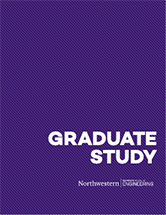Teaching Robotic Manipulation
Prof. Kevin Lynch's course is critical to the MSR experience and has led to a number of exciting innovations.
Humans are quite adept at manipulating the world. We can push a sofa on the floor, pivot a refrigerator on its legs, throw and catch a baseball, jiggle a key into a lock, shuffle and deal cards, and carry a tray of food without spilling. On the other hand, robots usually only manipulate the world by grasping and carrying. We can build a very precise positioning robot, but if it can't grasp the object in some way, there's not much it can do.
That paragraph is how Mechanical Engineering Chair and Professor Kevin Lynch introduces his Robotic Manipulation course, one of three required courses within Northwestern's Master of Science in Robotics (MSR) program. The class allows students to focus on the interactions between robots and the objects they are manipulating, as well as robots and the world around them.
These concepts are critical for both robotics software and hardware engineers to grasp, and the coursework is foundational to students' understanding of how to make robots work. At the same time, the course as a whole has inspired a number of exciting innovations inside and outside the classroom. A small sampling of those innovations can be found below.
A new textbook
The course covers content from Lynch's new textbook, Modern Robotics: Mechanics, Planning and Control. The book was developed using years of past Robotic Manipulation course notes, as well as notes from the Introduction to Robotics course taught at Seoul National University by Frank C. Park, who is the co-author of the textbook.
A new teaching style
Rather than spend class time teaching new concepts, Lynch pre-recorded virtually all of the course's lectures and shares them with students beforehand. This way, class time is spent discussing those concepts, going through physical examples and working on sample projects or problems in groups.
A new simulation environment
Students in the course are able to take advantage of simulation environments that work with the free, cross-platform robot simulator V-REP to help them visualize and interact with virtual robots during the completion of their assignments.
A new software library
A software library was created as a supplement to the textbook that features easy-to-understand and thoroughly documented implementations of much of the book's content. This is a tool students can use as a way to complete assignments as well as for future robotics projects. The software is available in Python, MATLAB, and Mathematica. Many MSR students use this library after taking the course, including Chainatee Tanakulrungson (MSR '18), who used it for helping a robot catch a ball, and Solomon Wiznitzer (MSR '18), who used it for his Inverted Pendulum.
A new Coursera Specialization
The insight taught in Robotic Manipulation was deemed so valuable and groundbreaking that it led to the creation of a new Modern Robotics specialization on Coursera. The six-course specialization gives registrants the opportunity to sample what students in Lynch's MSR course experience for a full quarter.
Contact the MSR program directly if you would like to learn more about the Robotic Manipulation course and how it could impact your experience in the MSR program.

